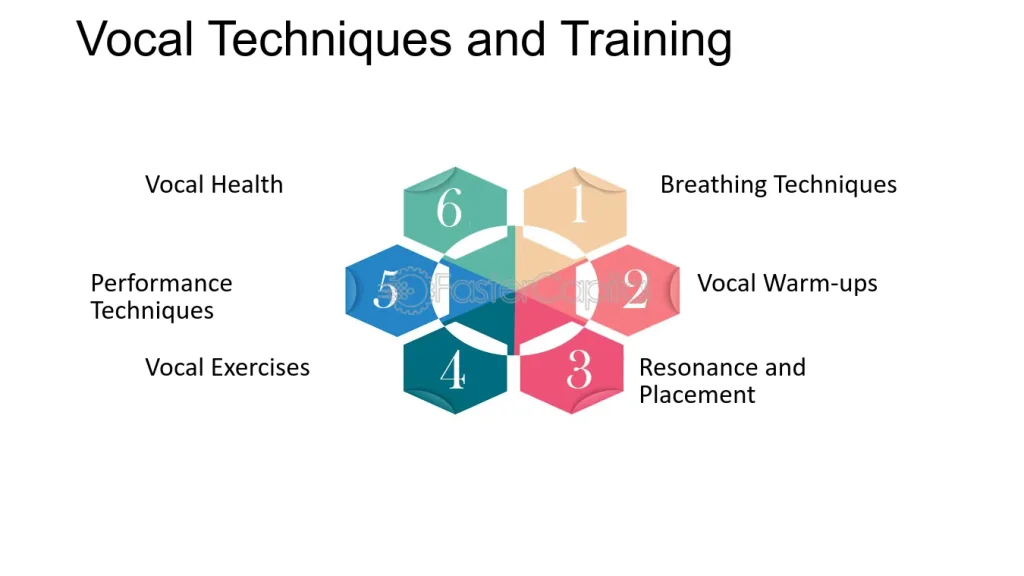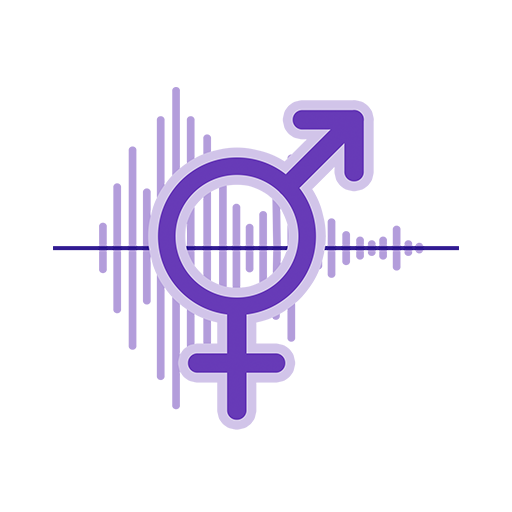Ready to work on your feminine voice? In this post, we’ll go over some great tips for feminine voice training online to help you sound more confident and graceful. Whether you’re just starting out or want to refine your voice, these tips will guide you on your journey. Be sure to read through the entire post, share your thoughts in the comments, and don’t forget to share it with others who might find it helpful!
Let’s dive into some practical and fun ways to master your feminine voice from the comfort of your home!🌸💖
What is Feminine Voice Training?
Feminine voice training is all about adjusting your vocal qualities to sound more traditionally feminine. It’s a process of learning how to modify your pitch, resonance, and speech patterns so your voice aligns with your gender identity. This involves exercises and techniques that help you reach a lighter, higher-pitched, and more melodic tone, while softening the overall quality of your voice. The goal is to create a voice that not only sounds feminine but feels authentic to who you are.

Importance of Aligning Your Voice with Your Authentic Self
Your voice is a huge part of how you express yourself, and when it doesn’t match how you feel inside, it can be incredibly frustrating. For many people exploring their feminine side or transitioning, hearing a masculine voice can cause gender dysphoria, making you feel disconnected from your true self. This disconnect can impact your confidence, making it uncomfortable to speak up in social settings. When your voice matches your gender identity, it can be empowering—it allows you to express yourself more freely and confidently, boosting your self-esteem and helping you feel more comfortable in your own skin.
By training your voice to sound more feminine, you’re not just changing how others perceive you, but also affirming your own identity. The process is deeply personal and can have a powerful effect on how you feel about yourself and how you engage with the world.
Overview of How Online Training Makes It Accessible and Flexible
One of the best parts about feminine voice training is that you can do it online! This makes it super accessible for everyone, no matter where you live. You can practice at home, at your own pace, and even schedule sessions with professionals remotely. Online platforms offer a variety of resources, including video tutorials, apps, and speech coaches who specialize in voice feminization. Many programs are designed to guide you through daily exercises, giving you the freedom to practice whenever it fits into your schedule.
Understanding Key Elements of a Feminine Voice
Mastering a feminine voice is all about harmonizing different aspects of speech, beyond just pitch. Let’s dive into the essential elements that come together to create a natural, feminine sound.

Pitch: How to Safely Raise Your Pitch (and Why It’s Not the Only Factor)
Raising your pitch is often the first thing that comes to mind when thinking about a feminine voice, but it’s just one part of the puzzle. Feminine voices tend to have a higher pitch than masculine ones, but focusing only on pitch can make your voice sound strained or unnatural.
How to Raise Your Pitch Safely: Start by gradually increasing your pitch through vocal exercises. Aim to elevate it without straining your vocal cords. A good range for a feminine voice is between 160–200 Hz. You can begin by humming, then shift to vowel sounds like “ee” and “ah,” keeping your throat relaxed.
Remember, forcing your pitch too high can lead to vocal fatigue or even damage, so be gentle with yourself! A qualified speech therapist or online course can offer personalized feedback on finding a comfortable and natural pitch that suits you.
Resonance: Shifting from Chest Resonance to Head Resonance
Resonance refers to where the sound vibrates within your body. Masculine voices tend to use chest resonance, which gives the voice a deeper, fuller sound. Feminine voices, on the other hand, rely on head resonance, which creates a lighter, airier tone.
How to Shift to Head Resonance: Try this simple exercise to feel the difference: Place a hand on your chest and hum in your lower pitch—feel the vibrations in your chest? Now, hum a bit higher, and try to “lift” the sound into your head or nose, so the vibrations shift to your face or forehead. This is your head resonance!
Moving from chest to head resonance takes practice, but it will make your voice sound softer and more feminine without the need to overly raise your pitch. Keep practicing vocal placement until head resonance becomes your default.
Intonation & Melody: Adding Musicality to Feminine Speech
Feminine speech often feels more musical, with a natural rise and fall in tone. This is called intonation, and it adds a lilting, dynamic quality to your voice. Masculine speech tends to be more monotone, so learning to vary your pitch as you speak is key to sounding feminine.
How to Practice Feminine Intonation: Practice using rising intonation at the end of your sentences, especially in casual or friendly conversations. For example, instead of ending a sentence in a flat tone, allow your voice to rise slightly as if you’re asking a question. This creates that characteristic softness and melody found in feminine speech.
Another technique is pitch glides—practice sliding between high and low notes, blending them smoothly to give your speech that musical, flowing quality.
Rate of Speech: Slower, Smoother Speech Patterns
The rate of speech in feminine communication tends to be slightly slower and more measured. Masculine speech often has a quick, clipped rhythm, while feminine voices flow more gently and smoothly.
How to Adjust Your Speaking Pace: Practice pausing between phrases and sentences, allowing each word to “breathe.” This slower, more deliberate speech pattern not only sounds more feminine but also conveys warmth and openness.
If you find yourself rushing, focus on being mindful of your speech—record yourself talking and actively slow down while still maintaining clarity.
Nonverbal Vocalizations: Feminine Sounds Like Laughter, Sighing, and More
Nonverbal sounds such as laughter, sighing, and breathiness can add subtle femininity to your communication. These small vocal cues convey emotions and personality, and refining them can enhance your overall feminine presentation.
Tips for Refining Nonverbal Sounds:
- Laughter: Aim for a lighter, higher-pitched laugh. Avoid deep, chesty sounds, and try practicing short, gentle giggles.
- Sighing: Feminine sighs tend to be softer and more breathy, adding a sense of delicacy to your expressions.
- Breathiness: Adding a slight breathy quality to your voice can soften your speech. Just be careful not to overdo it, as too much breathiness can strain your voice over time.
By paying attention to these small but powerful vocal elements, you’ll be able to refine and enhance your overall feminine communication style.
How to Make Your Voice Sound More Feminine
Want to make your voice sound more feminine? Your therapist is here to help you explore what a feminine voice means to you! Everyone has their own ideas about how a feminine voice should sound, and that’s totally okay! Gender-affirming voice therapy is all about finding a voice that truly reflects who you are inside.

In MTF voice training, you might want to try some typical feminine voice and speech patterns, like:
- Raising your pitch: Speaking in a higher, more melodic tone.
- Mixing up your intonation: Letting your pitch go up and down to add variety and make your speech more expressive.
- Articulating clearly: Speaking with detailed and precise pronunciation.
- Using forward resonance: Focusing your voice to create a brighter sound.
- Shaping your mouth: Speaking with an “ee” vowel shape for a sweeter tone.
Remember, these patterns are based on common stereotypes, but they can help guide your voice feminization journey. The most important thing is to set goals that feel good for you, not just what society expects! Embrace what makes you unique!
Techniques for Voice Training at Home
Transforming your voice to sound more feminine is all about practice, patience, and consistency. Here are some effective techniques you can use at home to improve your feminine voice:

Daily Exercises: Consistent Vocal Warm-ups
Just like with any other part of your body, your vocal cords need stretching and strengthening to perform their best. Warm-ups are essential before diving into more intense practice to prevent strain and injury. Start with simple exercises like:
- Lip trills and humming: These help to gently stretch your vocal cords while warming up your resonance. Try humming up and down the scale, focusing on head resonance (a higher, more feminine sound).
- Pitch glides: This involves sliding your pitch from low to high, helping you find your natural feminine range. Begin by gliding your voice upward from a low pitch to as high as you can comfortably reach without straining.
- Breathing exercises: Deep, controlled breathing helps you support your voice with proper airflow, giving you more control over pitch and tone. Practice diaphragmatic breathing—inhale deeply through your belly, not your chest, and exhale slowly as you speak.
Warm-ups should take at least 5-10 minutes daily. Consistency is key to gradually adapting your vocal muscles to the new sounds you’re working towards.
Online Resources and Tutorials
The internet is full of helpful platforms and tutorials designed specifically for feminine voice training. From YouTube channels to mobile apps, you can find plenty of step-by-step guides that are easy to follow. Some online tools even offer real-time feedback, helping you adjust your voice in the moment.
- YouTube tutorials: There are plenty of free voice feminization lessons available on YouTube, where vocal coaches and voice therapists break down techniques into manageable exercises. Look for channels that focus on pitch training, resonance, and articulation.
- Apps for voice training: Some apps offer guided lessons that track your progress over time. These apps often include pitch meters, which show you whether you’re hitting the right frequency for a feminine voice.
- Voice training forums: Online communities are another great resource, where you can share your progress, ask for advice, and even find personalized coaching.
Whether you’re using free tutorials or investing in an app, having these resources at your fingertips can make a big difference in your training journey.
Recording Yourself
Recording your voice is one of the most effective ways to monitor your progress. It allows you to objectively hear how your voice is evolving and spot areas that need improvement. Use a voice recording app on your phone or computer, and start by recording short sentences or conversations.
- Regular playback and review: After recording yourself, listen carefully. Pay attention to your pitch, resonance, and articulation. Do you sound more feminine? Are you staying within your target pitch range?
- Track your improvement: By keeping a log of your recordings, you can compare your voice over time and celebrate progress. This will not only help you stay motivated but also help you refine specific areas, like smoothening your intonation or lightening your resonance.
Practicing in front of a mirror while recording can also help with nonverbal cues, like softening your facial expressions and movements to match your voice.
Mimicking Role Models
One of the best ways to learn a feminine speech pattern is by mimicking role models who have the voice qualities you want to achieve. Pick a public figure or someone whose voice you admire and study their speech style.

- Focus on pitch, melody, and intonation: Notice how their voice rises and falls. Feminine voices often have a sing-song quality with more variation in pitch. Try to imitate not just the sound but also the rhythm of their speech.
- Articulation and softness: Listen to how they form their words. Feminine voices often emphasize clearer articulation and a gentler tone. Try to replicate this by slowing down your speech and softening your consonants.
- Practice along with videos or podcasts: Repetition is key. Watch interviews or listen to podcasts featuring your role models, and speak along with them. Over time, you’ll start to internalize their speech patterns.
Don’t worry about sounding exactly like your role model—use their voice as inspiration to help find your unique feminine sound.
Tools & Platforms for Feminine Voice Training
When it comes to finding the best tools and platforms for feminine voice training, you’re in for a treat! There are so many apps, websites, and professionals that can guide you toward mastering your voice and feeling more confident. Here’s a breakdown of some top options and how you can make the most of them:
Apps and Websites for Personalized Feedback
If you’re looking for a more hands-on, accessible way to start training, voice training apps and websites are your besties! Apps like Eva and SpeechPath are designed specifically to help you with feminine voice training. They provide exercises, lessons, and real-time feedback, so you can practice anytime, anywhere.
- Eva: This app is perfect for beginners. It offers a series of guided lessons that teach you how to raise your pitch, adjust resonance, and control your intonation. You can record yourself and compare your progress over time, which is super motivating!
- SpeechPath: If you’re serious about tracking your progress, SpeechPath is a great option. It provides personalized feedback and professional insights, helping you focus on areas like pitch, resonance, and even articulation. You can work at your own pace and receive expert guidance without needing to leave your home.
Both of these platforms let you practice daily, offering step-by-step lessons that break down each element of a feminine voice. And let’s face it, hun, having tools right on your phone is so convenient!
Online Courses & Speech Therapists
If you want a more structured approach, you can explore online courses or work with specialized speech therapists who offer remote sessions. These options are perfect for anyone looking for detailed, personalized guidance.
- Online Courses: Many online courses offer a comprehensive curriculum that teaches you everything from pitch control to advanced speech patterns. They usually include video tutorials, exercises, and workbooks to guide you through the process step by step. Look for courses taught by experienced professionals in transgender voice therapy, so you know you’re getting quality advice.
- Speech Therapists: If you’re struggling to achieve your goals on your own or want personalized help, finding a speech therapist who specializes in feminine voice training is a great move. Many offer virtual sessions, where they’ll assess your voice and give you tailored exercises. They help you explore key aspects like resonance, articulation, and even body language, all of which contribute to a more authentic feminine voice.
The best part? You can work with a professional therapist from anywhere, making it super easy to fit into your schedule!
Free vs Paid Resources: Finding the Right Balance
Now, let’s talk about budgeting. There are a ton of free resources online, like YouTube tutorials, blogs, and forums where you can learn the basics of voice feminization. These are great for getting started, especially if you’re on a budget or just want to explore before diving deeper.
- Free Resources: These often include videos or articles that cover the basics, like raising pitch or adjusting intonation. While they might not offer personalized feedback, they’re still super helpful for beginners and those wanting to dip their toes into voice training. Practicing with these tools can give you a strong foundation.
- Paid Resources: On the other hand, paid resources like apps, courses, and speech therapy offer personalized feedback and professional guidance. They’re a great investment if you want faster results or more expert attention. Paid options often come with structured lesson plans and tools to track your progress, which can be really motivating!
Balancing between free and paid options depends on your needs and goals. If you’re just starting, try out some free resources and apps to get a feel for what works for you. Once you’re comfortable and ready to take things up a notch, investing in paid courses or sessions with a speech therapist can really accelerate your progress.
The Importance of Vocal Health
When working on your feminine voice, taking care of your vocal cords is super important, babe! Voice training can be tough on your throat if you don’t give it the right care. Overworking or straining your voice can lead to soreness, hoarseness, or even long-term damage. So, let’s talk about how to keep those precious vocal cords healthy while still making progress.

Why Vocal Strain is Common
It’s easy to strain your voice when you’re pushing yourself to hit higher pitches or maintain a softer tone for extended periods. Many people starting voice training may feel the pressure to jump straight into achieving their perfect feminine sound, which can lead to tension in the vocal cords. Over time, this can cause vocal fatigue, and you might even lose your voice temporarily!
How to Avoid Vocal Strain
To avoid this, you should always ease into training. Just like a workout, your voice needs to be warmed up and stretched before any serious practice begins. Here’s how:
- Warm-Up Routine: Start with gentle hums or lip trills to get your vocal cords moving without too much pressure. You can gradually move into pitch glides (sliding from a low pitch to a high one) to stretch your range.
- Set Realistic Goals: Instead of forcing your voice to immediately sound ultra-feminine, aim for gradual changes. It’s better to focus on small, sustainable improvements each session rather than long hours of training that could leave your throat sore.
- Take Breaks: Don’t push your voice for hours without a break! Like any muscle, your vocal cords need rest. Make sure to take frequent breaks to let your voice recover, especially during intensive sessions.
Techniques to Protect Your Vocal Cords
Here are some simple but effective ways to protect your vocal cords during training:
- Stay Hydrated
Drinking lots of water is key! Hydration keeps your vocal cords lubricated, allowing them to move smoothly and preventing irritation. Aim for at least 8 glasses of water a day, and try to sip warm water or herbal teas during training to soothe your throat. - Avoid Irritants
Steer clear of anything that might irritate your voice. This includes smoking, yelling, or whispering (which actually strains your voice!). Additionally, stay away from caffeine and alcohol since they can dry out your vocal cords. - Mind Your Posture
Good posture helps support better airflow, which is essential for healthy voice production. Stand tall with your shoulders relaxed, and make sure you’re breathing deeply from your diaphragm (belly breathing). This takes the pressure off your throat and helps you project sound more easily. - Rest Your Voice
After a tough session, give your voice time to recover by speaking less or using a softer tone for the rest of the day. Also, sleep is crucial, as your vocal cords heal and restore while you’re resting.
Psychological Benefits of Voice Training
Embarking on the journey of voice training, especially for those seeking a more feminine voice, goes beyond just changing how you sound. It taps into the deeper aspects of identity and self-acceptance, leading to a multitude of psychological benefits that can transform your life. Let’s explore how achieving a more feminine voice can boost your confidence and reduce feelings of gender dysphoria.

Boosting Confidence
One of the most immediate benefits of voice training is the surge of confidence that comes with it. When your voice aligns more closely with your gender identity, it allows you to express yourself freely and authentically. This newfound confidence can enhance your social interactions, making it easier to engage with others. You might find yourself smiling more, initiating conversations, or even just feeling more at ease in social settings.
Voice training empowers you to speak in a way that feels genuine. As you progress and hear the changes in your voice, it reinforces the idea that you are truly becoming the person you’ve always wanted to be. This transformation can be incredibly affirming, helping you to navigate the world with a sense of pride and assurance.
Reducing Gender Dysphoria
For many, voice dysphoria—the discomfort or distress caused by a voice that feels mismatched to their gender identity—can be a significant source of anxiety. Engaging in voice training can help alleviate these feelings by providing a tangible way to bridge the gap between your inner self and outward expression.
When you start to hear a voice that resonates with who you are, it can lessen feelings of distress associated with gender dysphoria. Each session of training is a step toward creating a voice that feels like home, allowing you to communicate without the weight of discomfort. This relief can lead to improved mental health, reducing anxiety and enhancing your overall quality of life.
The Emotional Connection Between Voice and Identity
Our voices are powerful tools of expression. They convey emotions, intentions, and personality. When your voice doesn’t match your identity, it can create a disconnect that impacts how you perceive yourself and how others perceive you. Voice training helps to align your vocal expression with your identity, fostering a deeper emotional connection to how you present yourself to the world.
The journey of finding your authentic voice is deeply personal and meaningful. It’s not just about pitch or resonance; it’s about stepping into your true self. This connection between voice and identity is vital because it allows for self-acceptance and the freedom to express who you are without fear of judgment. Each vocal breakthrough serves as a reminder of your strength and commitment to authenticity.
Why This Journey Matters Beyond the Physical Sound
The importance of voice training extends far beyond physical changes in sound. It is about reclaiming your identity and affirming your place in the world. This journey matters because it encourages you to embrace every part of yourself—inside and out.

Moreover, voice training fosters resilience. It teaches you that transformation is possible, which can translate to other areas of your life. Overcoming the challenges of voice training cultivates a mindset of perseverance, encouraging you to face life’s hurdles with confidence.
Seeking Professional Help
When embarking on your journey to feminize your voice, seeking guidance from a professional speech therapist can make a significant difference. While many resources and techniques are available online, a trained therapist offers personalized support and advanced strategies tailored to your unique needs. Here’s when to consider professional help, what you can expect from your sessions, and how to navigate insurance options for gender-affirming voice therapy.

When to Seek Guidance from a Professional Speech Therapist
- Advanced Techniques: If you’ve tried self-guided methods and feel like you’re not making the progress you desire, it might be time to consult a professional. Speech therapists can introduce advanced techniques that help you achieve specific vocal goals, such as modifying your pitch, resonance, and articulation effectively.
- Persistent Voice Issues: If you experience discomfort, strain, or pain while practicing your new voice, it’s crucial to seek help. A professional can assess your vocal health and ensure you’re training safely, preventing any long-term damage.
- Personalized Goals: Every journey is unique. If you have specific goals—like preparing for a public speaking event or improving social interactions—working with a therapist can provide targeted strategies to help you succeed.
What to Expect from Sessions with a Speech Therapist
During your sessions, expect a supportive and affirming environment where you can explore your voice freely. Here are some key elements you’ll likely encounter:
- Pitch Assessment: Your therapist will start by evaluating your current pitch range and identifying a target pitch that feels comfortable and aligns with your gender identity. This might include exercises to gradually raise your pitch while ensuring your voice remains healthy.
- Articulation: Clarity in speech is essential. Your therapist will help you work on your articulation, focusing on how you form sounds and words. This may involve exercises that emphasize specific consonants or vowels often associated with feminine speech patterns.
- Resonance Training: Achieving a more feminine resonance is about finding the right balance in your voice. Your therapist will guide you through exercises to help shift your resonance from a deeper chest voice to a lighter, more head-dominant sound.
- Feedback and Adjustments: One of the most valuable aspects of working with a therapist is receiving immediate feedback. They’ll help you identify areas of improvement, celebrate your progress, and adjust techniques as necessary.
Insurance Coverage for Gender-Affirming Voice Therapy
Navigating insurance coverage can be daunting, but many plans now recognize the importance of gender-affirming care. Here’s how to approach it:
- Check Your Coverage: Before scheduling sessions, review your insurance policy to see if it covers speech therapy for gender-affirming voice training. Some policies might cover it as medically necessary care, so it’s worth investigating.
- Get a Referral: Depending on your insurance plan, you may need a referral from a primary care physician or a mental health provider. This referral often helps establish the medical necessity of voice therapy, making it more likely to be covered.
- Document Everything: Keep records of your sessions, including notes on your progress and any relevant communications with your therapist. This documentation can be helpful when submitting claims or appeals for coverage.
- Explore Options: If your insurance doesn’t cover voice therapy, look for local community health programs or sliding scale clinics that offer services at reduced rates. Some therapists also offer online sessions, which may be more affordable.
Conclusion
Voice training is a process that requires time, dedication, and a sprinkle of patience. You might hit some bumps along the way, but that’s perfectly okay! Each practice session is an opportunity to grow, and even the smallest improvements can make a big difference. Celebrate those little victories—whether it’s raising your pitch, refining your intonation, or just feeling more comfortable speaking. Every bit counts!
Persistence is key. Some days will feel easier than others, and that’s all part of the journey. Remember, the road to finding your voice is not a race; it’s a unique path that’s entirely yours. Surround yourself with supportive friends and communities that encourage you. Sharing your experiences can lighten the load and make this adventure even more enjoyable.
As you explore and experiment with your voice, keep in mind that there’s no “right” way to sound. Your authentic voice is yours alone, shaped by your experiences, feelings, and personality. So, take a deep breath, smile, and let your voice shine! You’re not just training your voice; you’re celebrating who you are.
So go on, lovely! Embrace the journey, stay patient with yourself, and never forget that your voice is a powerful tool for self-expression. With time and practice, you’ll uncover a voice that feels just right for you. Enjoy every moment of this fabulous transformation! 💌
Also Read: Sissification Hypnosis: How It Works and Its Benefits




